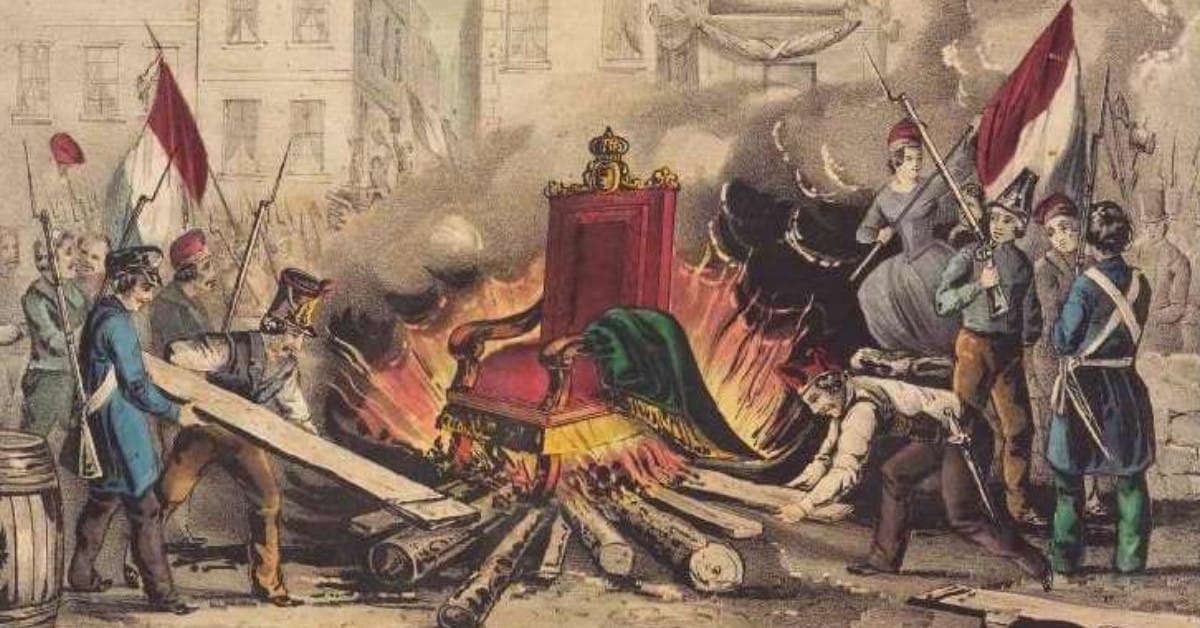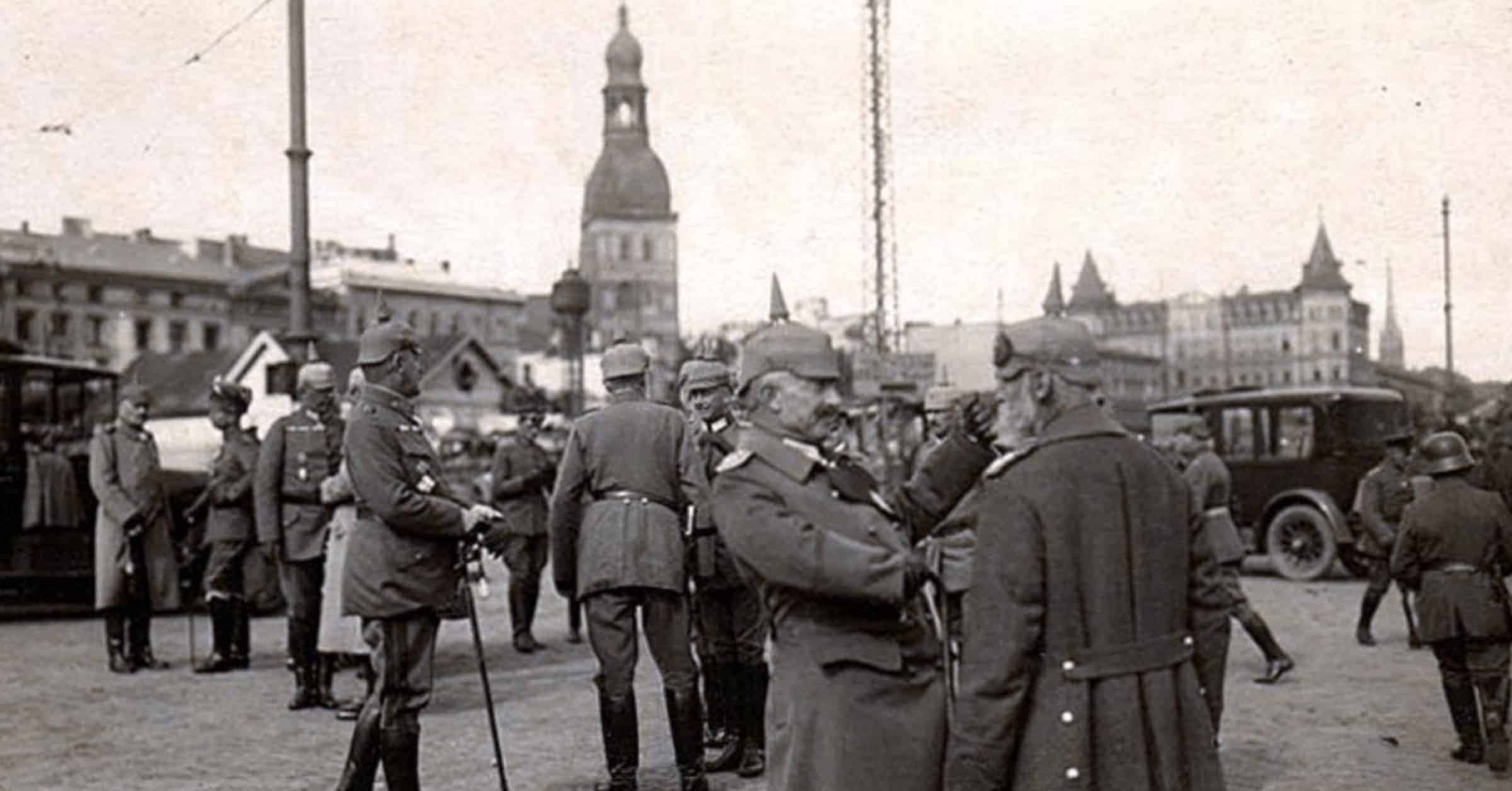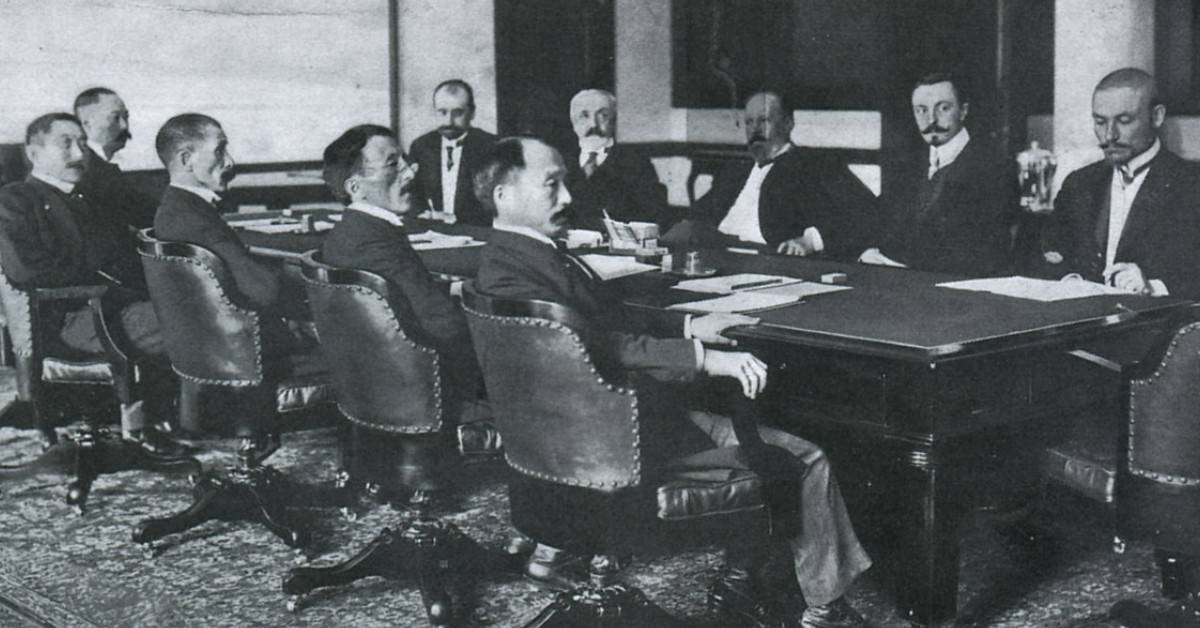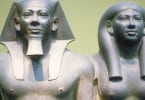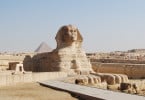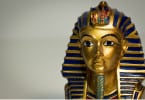Alexander the Great was an ancient Macedonian ruler with a brilliant military mind, the greatest power ever seen as the king of Macedonia and Persia. In turns, Alexander inspired charismatic and ruthlessness, brilliance, and a hungry power, diplomacy, and bloodthirsty loyalty in his men that they would follow him everywhere and die if needed.
Although Alexander the Great died before realizing his dream of uniting a new realm, his influence on Greek and Asian culture was so deep that it inspired the Hellenistic Period in a new historical era.
Where Was Alexander the Great Born?
Alexander the Great (born 356 BCE, Pella, Macedonia [northwest of Thessaloniki, Greece]), also known as Alexander III or Alexander of Macedonia,
Alexander the Prince
Alexander was born in Pella, which was Macedonia’s administrative capital, around 20 July 356 B.C. His father was often away, conquering neighboring lands and destroying revolts. Also, Macedon’s King Philip II was one of the most prominent role models, Alexander.
Philip ensured that Alexander received a significant and notable education. He arranged for Aristotle himself to teach Alexander. His education filled him with a love of science, logic, philosophy, music, and culture. Aristotle’s teachings [would later assist] in handling his new subjects in the nations that he invaded and conquered, enabling him to respect and preserve such disparate cultures.
Nearly every year Alexander watched his father’s campaign and won victory after a win. Philip turned the Macedonian army into a professional organization from citizen-warriors. In battle, Philip suffered serious injuries such as the loss of an eye, a broken shoulder, and a crippled leg. Yet he was also going to keep fighting, something that Alexander would do as commander.
Philip had decided to leave his 16-year-old son in charge of Macedonia while he was out on the campaign. Alexander took advantage of the opportunity by defeating the people of Thrace called Maedi and founding “Alexandroupolis,” a city he named after himself.
In addition, ancient records indicate that the two were later strangled in Alexander’s teenage years, and at one point his mother was exiled to Epirus. Alexander may have resented his father’s many marriages and the children born out of them, seeing them as a threat to his own position.
Philip had contemplated invading Persia at the time of his death. The dream was conveyed to Alexander, partly through his mother Olympias. She fostered a burning dynastic ambition in him and told him that invading Persia was his destiny.
After the death of his father, Alexander quickly moved toward consolidating power. He received the Macedonian army’s support and intimidated the Greek city saying that Philip had prevailed in accepting his rule. Alexander marched against Thebes, a city in Greece that had risen up in revolt, capturing it in 335 B.C. after campaigns in the Balkans and Thrace, and having it destroyed.
He was ready to begin a war against the Persian Empire with Greece and the Balkans pacified, a war his father had organized but he would be the one to lead, as fate would have it.
Life of Alexander the Great
Born at Pella in Macedonia in 356 BCE, he was the son of Philip II and Olympias (daughter of King Neoptolemus of Epirus). He was taught by Aristotle from the age of 13 to 16, who inspired him with an interest in philosophy, medicine, and scientific research, but later he was to go beyond the narrow precept of his teacher that non-Greeks should be treated as slaves. Left in charge of Macedonia in 340 Alexander defeated the Maedi, a Thracian people, during Philip’s attack on Byzantium.
Two years later, in the Battle of Chaeronea, in which Philip defeated the allied Greek states, he commanded the left-wing and showed personal courage in breaking the Sacred Band of Thebes, an elite military corps of 150 lovers.
A year later, Philip divorced Olympias, and after a festive quarrel to celebrate the new marriage of his wife, Alexander and his mother fled to Epirus, and later, Alexander went to Illyria. Shortly thereafter, father and son were reconciled, and Alexander came back, but his place as heir was put in jeopardy. However, in 336 Alexander, acclaimed by the army on the assassination of Philip, succeeded without opposition.
He executed the princes of Lyncestis at once, supposedly behind the murder of Philip, along with all potential rivals and the whole faction against him. He then marched south, recovered a wavering Thessaly, and was named generalissimo for the forthcoming invasion of Asia, already prepared and initiated by Philip at an assembly of the Greek League of Corinth.
Returning to Macedonia via Delphi (where the Pythian priestess acclaimed him “invincible”), he advanced to Thrace in spring 335 and crossed the Danube to disperse the Getae after forcing the Shipka Pass and crushing the Triballi; turning west, he defeated and shattered a coalition of Illyrians who had invaded Macedonia. Meanwhile, a rumor of his death had precipitated a Theban Democratic revolt; other Greek states supported Thebes, and Demosthenes encouraged the Athenians to vote for help.
Alexander marched 240 miles from Pelion (near modern Korçë, Albania) to Thebes in 14 days, in Illyria. He made an entry when the Thebans refused to surrender and razed their city to the ground, saving only temples and the house of Pindar; 6,000 were killed and all survivors sold into slavery. The severity cowed the other Greek states and Alexander could afford to treat Athens with leniency. There were Macedonian garrisons remaining in Corinth, Chalcis, and the Cadmea (Thebes Citadel).
Alexander Enters Egypt
Alexander departed for Egypt after refusing another peace bid from Darius. At Gaza, however, he was sidelined and forced to suffer another lengthy siege. He took the town after several weeks and entered Egypt where he founded the town which still bears his name: Alexandria.
Alexander went to the desert to find the oracle of Ammon, the god of good advice. Legends abounded on what had happened in the oracle, but Alexander held mom’s experience. Also, the visit furthered the belief that Alexander was a deity.
Alexander Becomes King of Persia
After conquering Egypt, Alexander met Darius and his huge forces in Gaugamela in October 331 B.C. After fierce fighting and heavy casualties on both sides, Darius fled and was assassinated by his own forces. It was said that Alexander was sad when he found Darius’ body and gave him a royal burial.
Eventually rid of Darius, Alexander proclaimed himself King of Persia. But another Persian leader, Bessus (also thought to be the assassin of Darius), also claimed the throne of Persia. Alexander should not have allowed the claim to stand.
After Alexander’s relentless pursuit, Bessus’ troops handed Bessus over to Ptolemy, Alexander’s good friend, and he was mutilated and executed. Alexander had complete control of Persia with Bessus out of the way.
Proskynesis
Alexander took on other Persian customs to gain popularity with the Persians. He started dressing like a Persian and followed the practice of proskynesis, a tradition of the Persian court that involved bowing down and kissing the hands of others, depending on their rank.
The Macedonians were less than thrilled by Alexander’s reforms and his desire to be recognized as a god. They declined to practice proskynesis, and some were plotting his death.
Increasingly paranoid, after Parmerio ‘s son Philotas was accused of plotting an assassination attempt against Alexander (and thus killed), Alexander ordered the assassination of one of his most esteemed generals, Parmerio, in 330 B.C.
Murder of Cleitus
Cleitus, another of Alexander’s general and loyal friends, also met a violent end in 328 B.C. Fed up with the current Persian-like persona of Alexander, a drunk Cleitus was constantly insulting Alexander and dismissing his victories.
Pushed too far, Alexander killed Cleitus with a spear, a sudden act of violence that caused him to feel depressed. Many historians believe that Alexander killed his general in a drunkenness fit — a persistent issue that troubled him for most of his life.
Alexander struggled to conquer Sogdia, which remained loyal to Bessus, a region of the Persian Empire. The Sogdians found refuge at the top of a rock and refused to surrender to Alexander’s demand.
Alexander sent a few of his men to scale the rock and take the Sogdians by surprise, not one to take “no” for an answer. One of those on rock reportedly was a girl named Roxane.
Alexander has fallen in love with Roxane on sight as the story goes. Despite her Sogdian heritage, he married her and she joined him on his journey.
Invasion of India
In early summer 327, Alexander was leaving Bactria under a reorganized command with a reinforced army. However, if Plutarch’s figure of 120,000 men has any truth, it must include all kinds of auxiliary services, along with muleteers, camel drivers, medical corps, peddlers, entertainers, women, and children; maybe the fighting strength was about 35,000.
Alexander split his forces across the Hindu Kush, possibly via Bamiyan and the Ghorband Valley. Half the army was sent through the Khyber Pass with the baggage under Hephaestion and Perdiccas, both cavalry commanders, while he led the rest, along with his siege train, through the hills to the north.
His advance across Swāt and Gandhāra was marked by the storming of the nearly impregnable pinnacle of Aornos, the modern Pir-Sar, a few miles west of the Indus and north of the Buner River, an incredible siege-craft feat. Alexander invaded Taxila in Spring 326, crossing the Indus near Attock, whose king, Taxiles, furnished elephants and troops in return for aid against his rival Porus, who controlled the lands between the Hydaspes (modern Jhelum) and the Acesines (modern Chenāb).
On the left bank of the Hydaspes Alexander fought his last great battle in June. There he founded two cities, Alexandria Nicaea (to celebrate his victory) and Bucephala (named after the death of his horse Bucephalus); and Porus became his ally.
How much Alexander knew about India beyond the Hyphasis (probably the modern Beas) is uncertain; there is no definitive proof he had learned of the Ganges. Yet he was eager to move on further, and when his troops mutinied, he had advanced to the Hyphasis, refusing to go further in the tropical rain; they were tired in body and mind, and Coenus, one of the four chief marshals of Alexander, served as their spokesman. Alexander decided to turn around on hearing the Army adamant.
He erected 12 altars to the 12 Olympian gods on the Hyphasis and constructed a fleet of 800 to 1,000 ships on the Hydaspes. He left Porus and then continued down the river into the Indus, with half of his troops on the shipboard and half marching down the two banks in three columns.
Nearchus led the fleet, and Onesicritus was Alexander’s own captain; the two later wrote campaign accounts. The march was attended with a lot of fighting and heavy, pitiless slaughter; Alexander received a severe wound at the storming of one Malli town near the River Hydraotes (Ravi) which left him weakened.
After entering Patala, situated at the head of the Indus River, he built a port and docks and explored both Indus arms, which presumably ran into Kachchh’s Rann afterward. He intended to lead part of his forces back by land, while the rest made a voyage of exploration along the Persian Gulf in perhaps 100 to 150 ships under the command of Nearchus, a Cretan with naval experience.
Local opposition led Nearchus to set sail in September (325), and he was detained for three weeks until late October he was able to pick up the northeast monsoon. Alexander also set off along the coast in September through Gedrosia (modern Baluchistan), but he was soon forced by the mountainous country to turn inland, thus failing to set up food depots for the fleet in his project.
Craterus, a high-ranking officer, had already been sent off to the Helmand Valley with his baggage and siege train, the elephants and the sick and wounded, along with three phalanx battalions, through the Mulla Pass, Quetta, and Kandahar; from there he was to march via Drangiana to join the main army on the Amanis (modern Minab) River in Carmania.
The march of Alexander through Gedrosia proved disastrous; the waterless desert and food and fuel shortages caused great suffering, and many, especially women and children, died in a sudden monsoon season flood while camping in a wadi. Lastly, Nearchus and the fleet followed him at the Amanis, which had also suffered losses.
Alexandar the Great Era
As a general Alexander is considered to be among the best in the world. He showed unusual versatility in combining different arms and tailoring his tactics to the challenge of enemies who commanded novel forms of warfare — the Shaka nomads, the Indian hill tribes, or the Porus with his elephants.
His strategy was skillful and imaginative, and he knew how to take advantage of the opportunities that emerge in any battle and can be decisive for victory or defeat; he also took the last advantage from victory by an unceasing pursuit. His cavalry usage was so effective he rarely had to fall back on his infantry to deliver the crushing blow.
Alexander’s brief reign marks a critical moment in Europe’s and Asian history. His exploration and his own personal interest in scientific science brought many developments in geographical knowledge and natural history.
His career led to the transition of the great centers of civilization eastward, initiating the new age of Greek territorial monarchies; spreading Hellenism throughout the Middle East in a vast colonizing wave, and creating, if not politically at least economically and culturally, a single world that stretches from Gibraltar to Punjab, open to trade and social intercourse and with a considerable ovum.
It is not untrue to say that the Roman Empire, the spreading of Christianity as a religion of the world, and the long years of Byzantium were all to some degree the results of the achievement of Alexander.
See Also
King Khufu Biography



